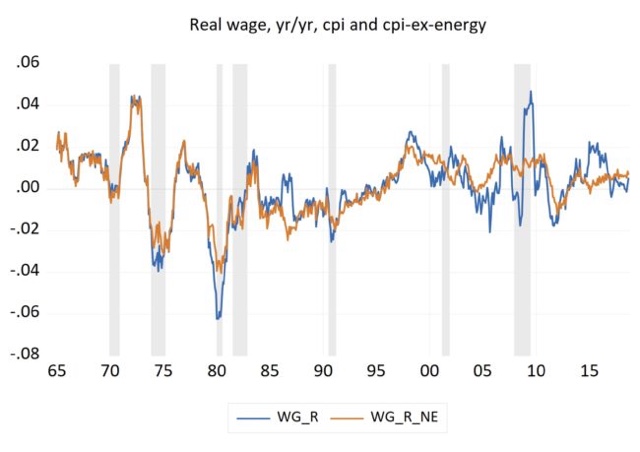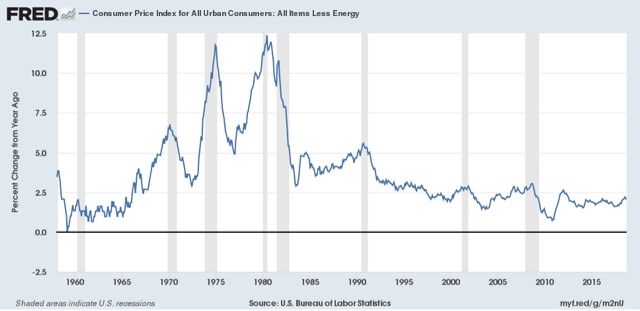Changes in labor bargaining power take up to a decade to be fully effective Sorry for the recent lack of posting on economic matters. Partly it is ennui, and partly it is a near total dearth of data in between the employment report a week ago Friday and tomorrow’s CPI report. Even a couple of quarterly series I usually report on have been inexplicably delayed. In the meantime, here is a graph from Jared Bernstein that is worth some extended comment. It is the YoY% change in real wages, adjusted by the full CPI (blue) and CPI less energy (gold): It is worthwhile to remember that, since 1980, YoY inflation has been decelerating on a secular basis: Bernstein uses this graph to make the point that the changes in “real” wages in the last decade or
Topics:
NewDealdemocrat considers the following as important: US/Global Economics
This could be interesting, too:
Joel Eissenberg writes How Tesla makes money
Angry Bear writes True pricing: effects on competition
Angry Bear writes The paradox of economic competition
Angry Bear writes USMAC Exempts Certain Items Coming out of Mexico and Canada
Changes in labor bargaining power take up to a decade to be fully effective
Sorry for the recent lack of posting on economic matters. Partly it is ennui, and partly it is a near total dearth of data in between the employment report a week ago Friday and tomorrow’s CPI report. Even a couple of quarterly series I usually report on have been inexplicably delayed.
In the meantime, here is a graph from Jared Bernstein that is worth some extended comment. It is the YoY% change in real wages, adjusted by the full CPI (blue) and CPI less energy (gold):
It is worthwhile to remember that, since 1980, YoY inflation has been decelerating on a secular basis:
Bernstein uses this graph to make the point that the changes in “real” wages in the last decade or so have been, more than anything, about the change in gas prices. Very true, but I think we can add some further comments.
1. Generally speaking, in the 1970s and 1980s, YoY real wages kept pace with CPI including gas prices. Beginning with the run-up in gas prices that started in 1999, they didn’t. This tells us a lot about the presence of labor bargaining power in the 1970s vs. the absence of labor bargaining power in the last 20 years.
2. Note that YoY real wage gains started to decelerate in the mid-1960s before turning negative in about 1974. Thereafter the negative trend intensified, and only finally ended in the mid-1990s. This is powerful evidence that the massive entry of women into the labor force had a big depressing effect on wages.
3. The depressing effect on wages of a surge in the labor force serves as a natural experiment that powerfully contradicts the narrative by those like Matt Yglesias who incessantly reiterate the claim that immigration raises wages. If that were true, why shouldn’t women’s participation have had the same effect?
4. Note that renewed long term decelerating trend in real wage growth ex-gas since the late 1990s.
5. The above show us that the trend in “real wages ex-gas prices” gives us two further lessons in how long it takes for the lessons of changes in labor bargaining power to be internalized by both labor and management. It took almost 10 years from the time when women started entering the labor force en masse for the trend in real wages to actually turn negative (vs. deceleratingly positive). Once that secular force ended, as a whole employers only gradually learned that they could continually reduce annual raises. All of which suggests that it will take up to a decade of increased labor bargaining power for employers to internalize the necessity for bigger wage increases.


